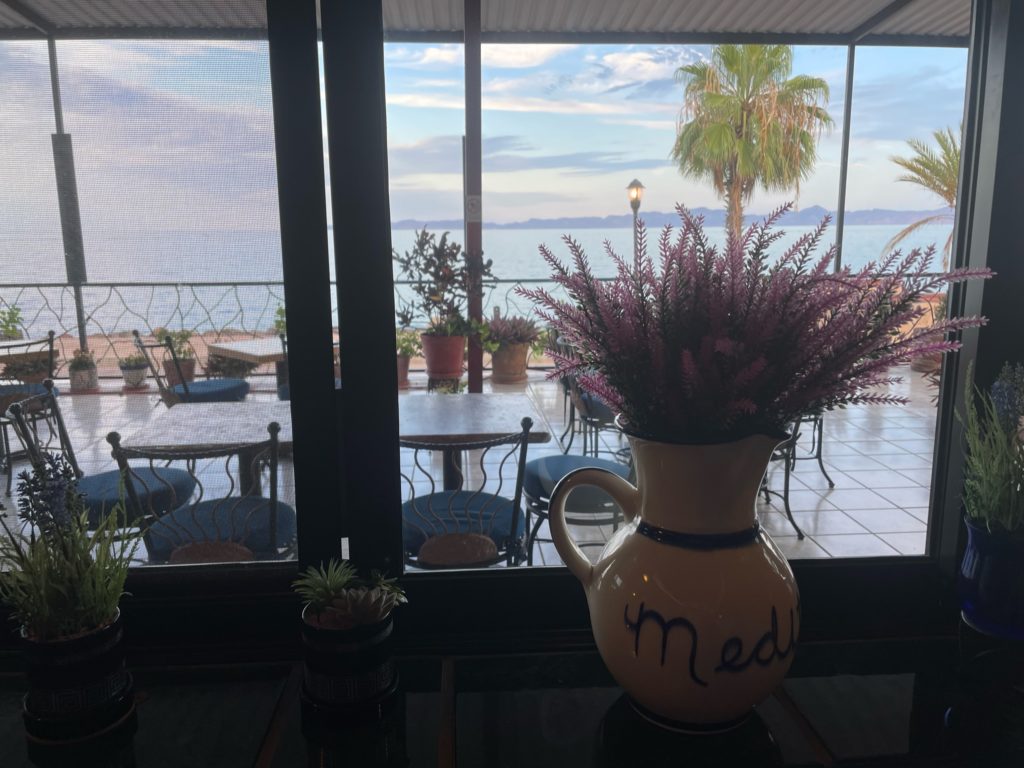Sunrise on Monday, August 8

Eric spent the morning working on the dive compressor. The first order of business was standard servicing: changing the oil, filters, and hose. The hose completely disintegrated, so it is probably safe to say it was time to change it.
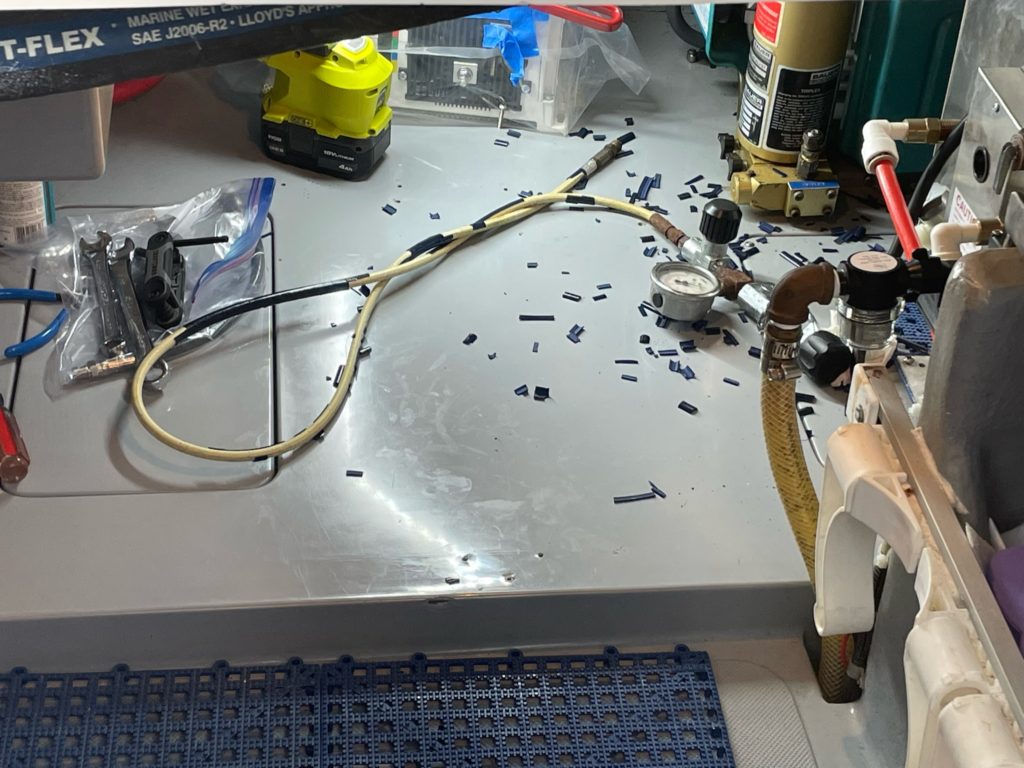
As he started up the compressor, air was not coming out of the final hose. He spent some time trying to troubleshoot the source of the problem, but at noon, he had to put the project aside. It was time to pick up our rental car and play tourists!
Our first stop was the mountain town of San Javier, which is 25 miles inland of Loreto by road, or 16 miles inland as the crow flies. We followed a well-maintained asphalt highway, which winded up the mostly desolate mountains. Despite being dry desert, the scenery was pretty.
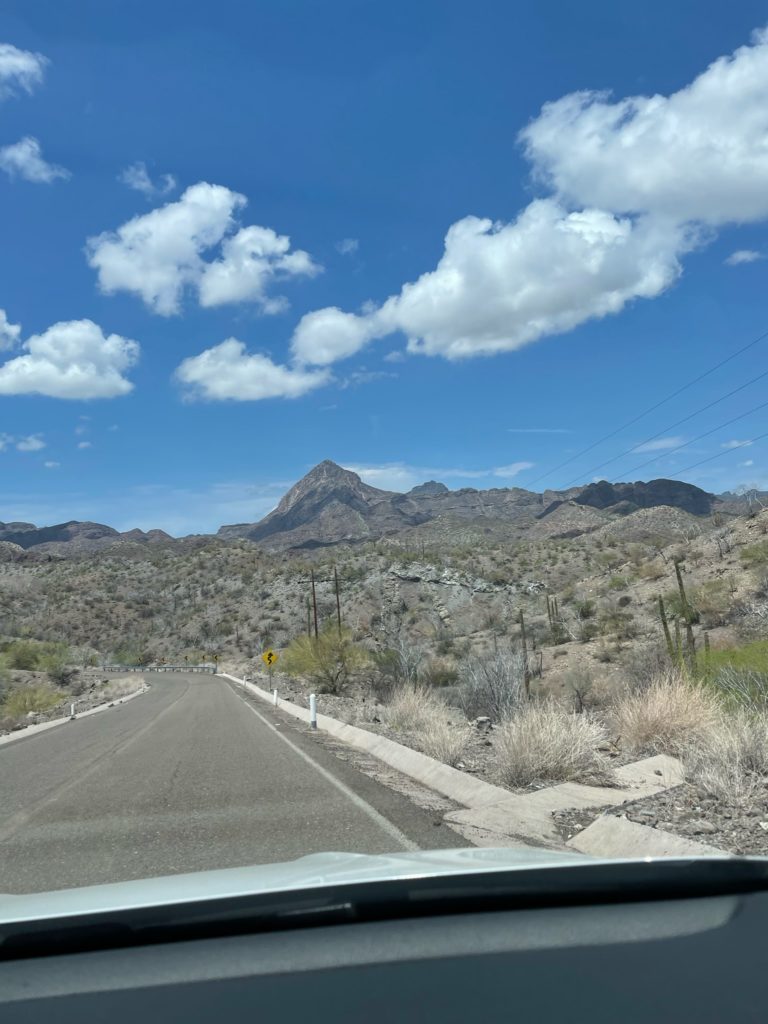
We were advised to drive slow as there were often animals on the road. We did see a donkey along the way. The higher we climbed, the greener it became.
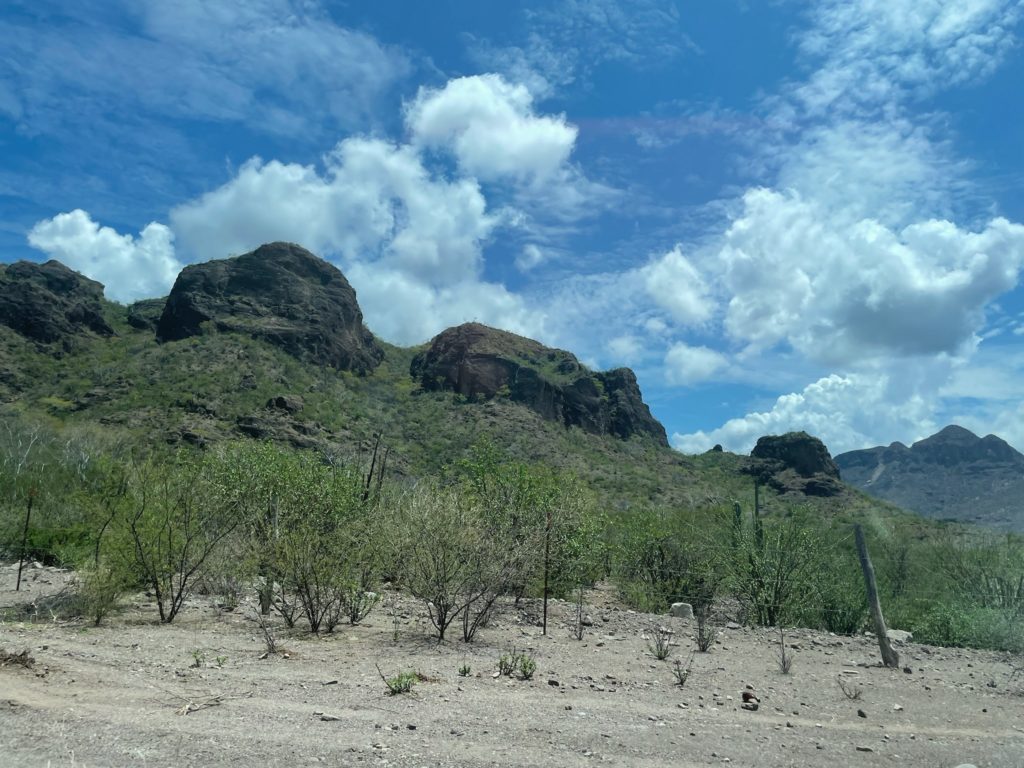
After an hour of driving, we reached a mesa, or a flat area, within the mountains. The road led through a medieval looking wall into a tiny town. The town consisted of two streets, both paved with cobblestone. One paralleled a dry river, the other ended at a church. Aside from the church, the buildings on both streets were tiny, low bungalows, most with palm frond roofs.

Just as the buildings are tiny, the church is also relatively small, and the decorations were austere compared to most churches that we’ve seen in Mexico in the past.
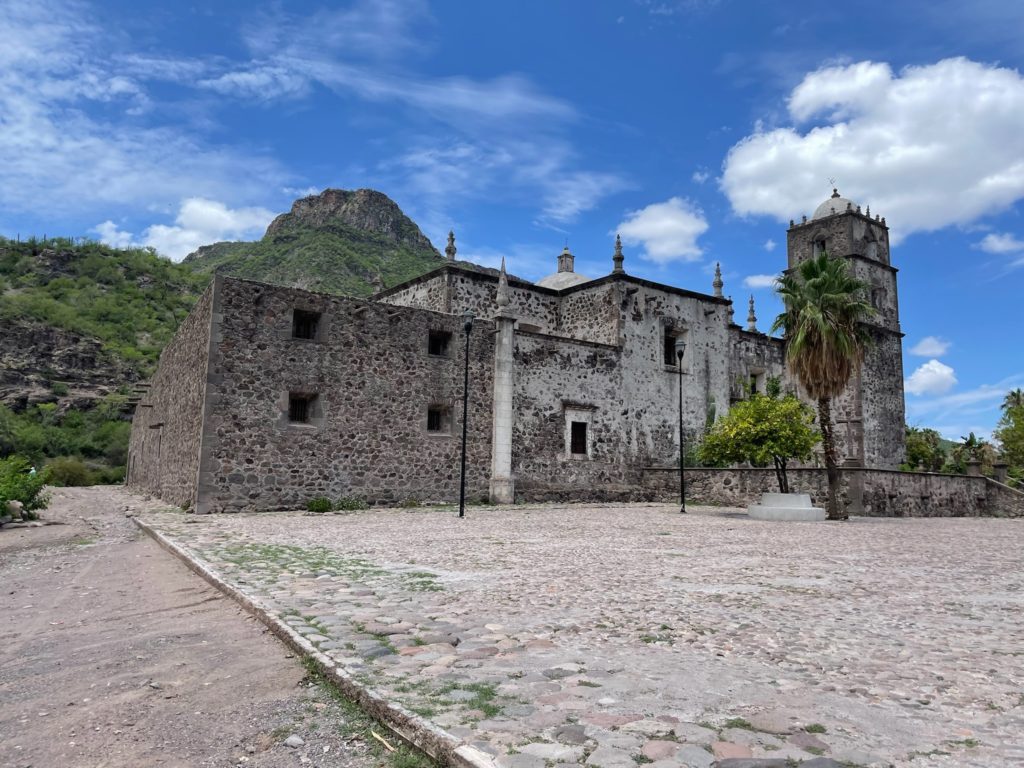
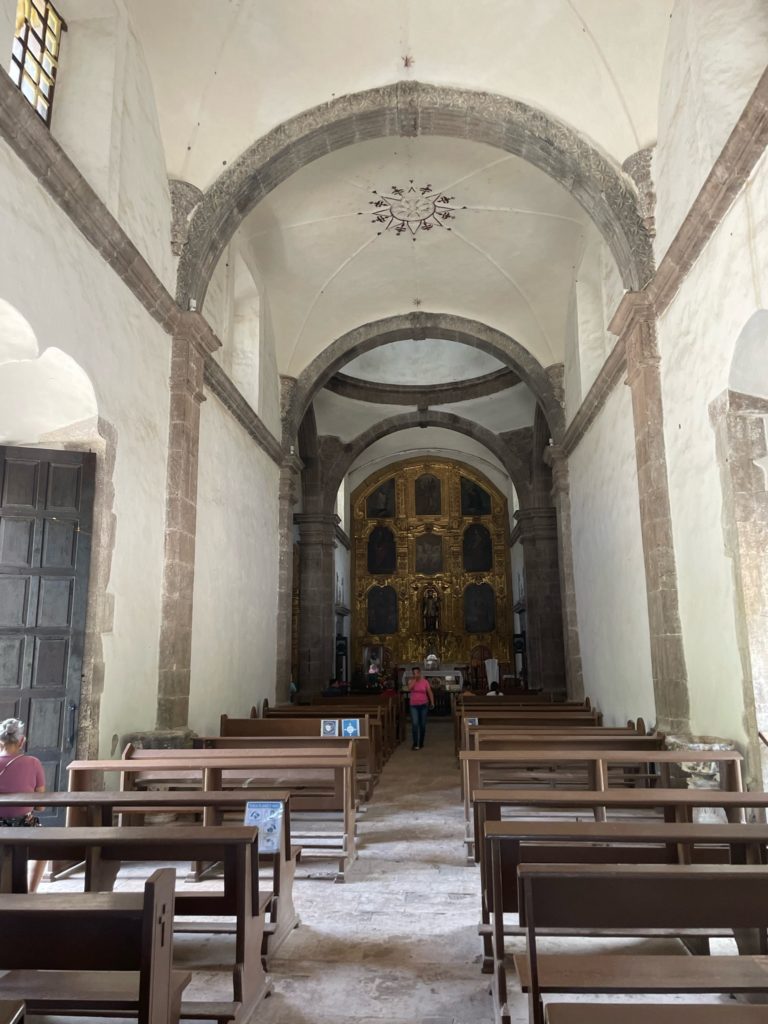
The Mission of San Javier was the first one built in the Californias (what is now Baja California in Mexico and the US state of California). According to the sign, the mission was founded in 1699, when the natives of this village let the gringos cohabitate with them. The temple was started in 1744 and completed in 1758. So it appears that the town of San Javier and the church are together considered “The Mission.”
Loreto was the first town established by the Spaniards in the Californias, in 1697. The church in Loreto was completed in 1703. So apparently to the Catholics, there is a difference between towns with churches and missions. We’d appreciate it if a religious person or history buff wants to clarify the differences.
We’re glad we went. It was a scenic drive and fun to see a slice of history, but we doubt we’d make the trek a second time. We headed down to Loreto, enjoying the pretty mountains and occasional glimpses of the azure ocean below.
We’d promised to pick up Sprezzatura Eric from the airport, and we arrived in Loreto with about 45 minutes to spare. We headed over the national park office to buy our park pass for the island parks, which was located in a lighthouse at the Loreto Harbor.
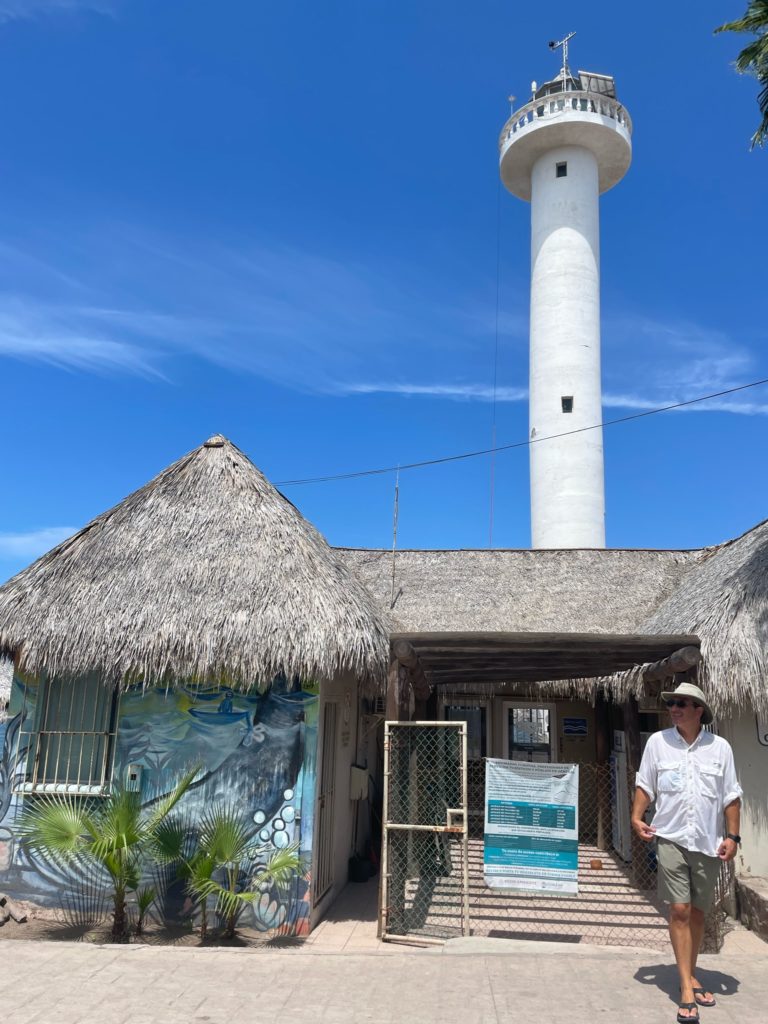
The office was closed. We were told it would re-open in ten minutes, so we walked around while we waited for it to open. North of the lighthouse is the beach.
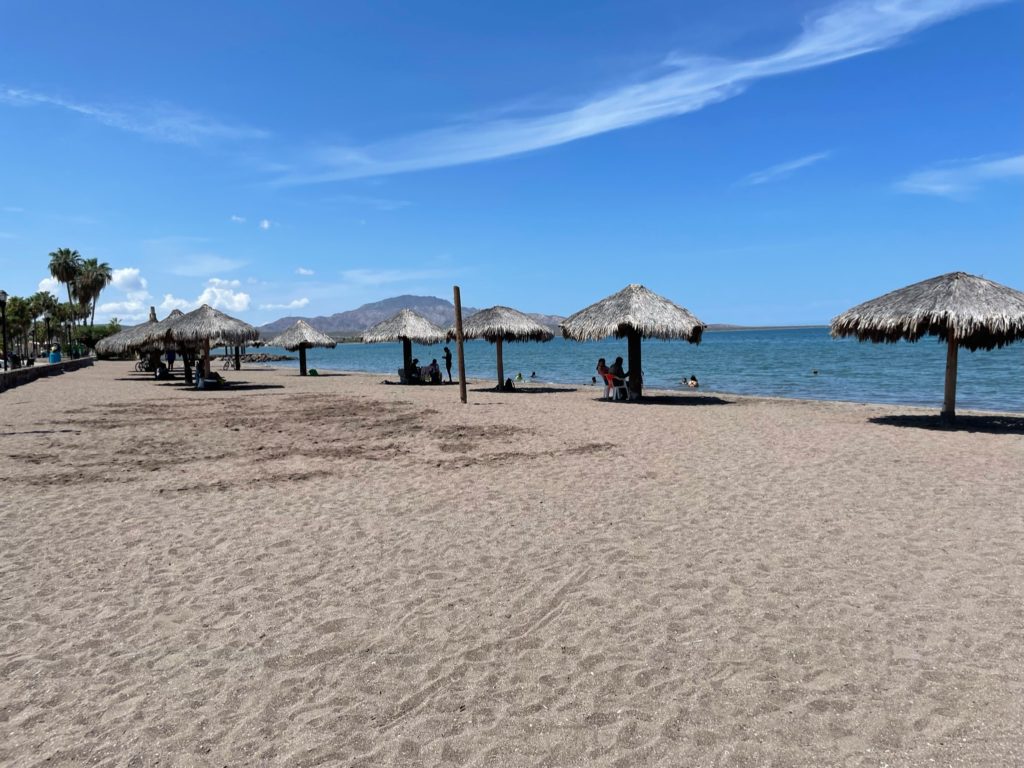
South is a sea wall and malecon (oceanfront walkway).
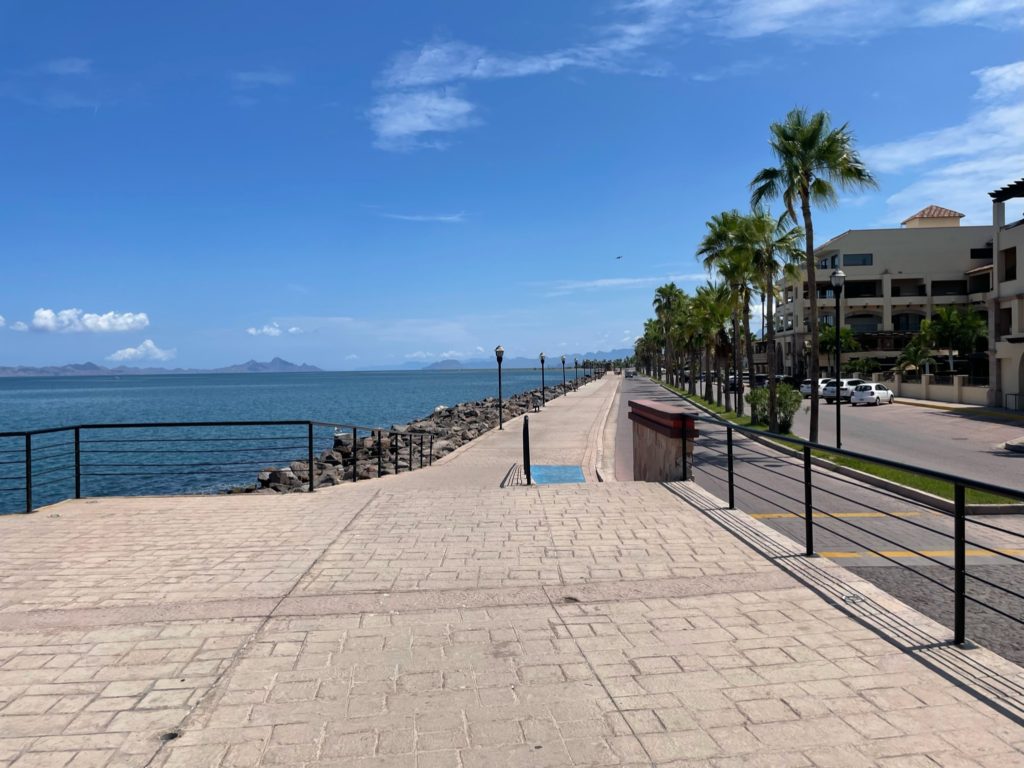
The entrance to the harbor is behind the lighthouse. It is a small boat harbor, and it is where all the tour boats to the island leave from.

Looking at the lighthouse and beach from the edge of the harbor
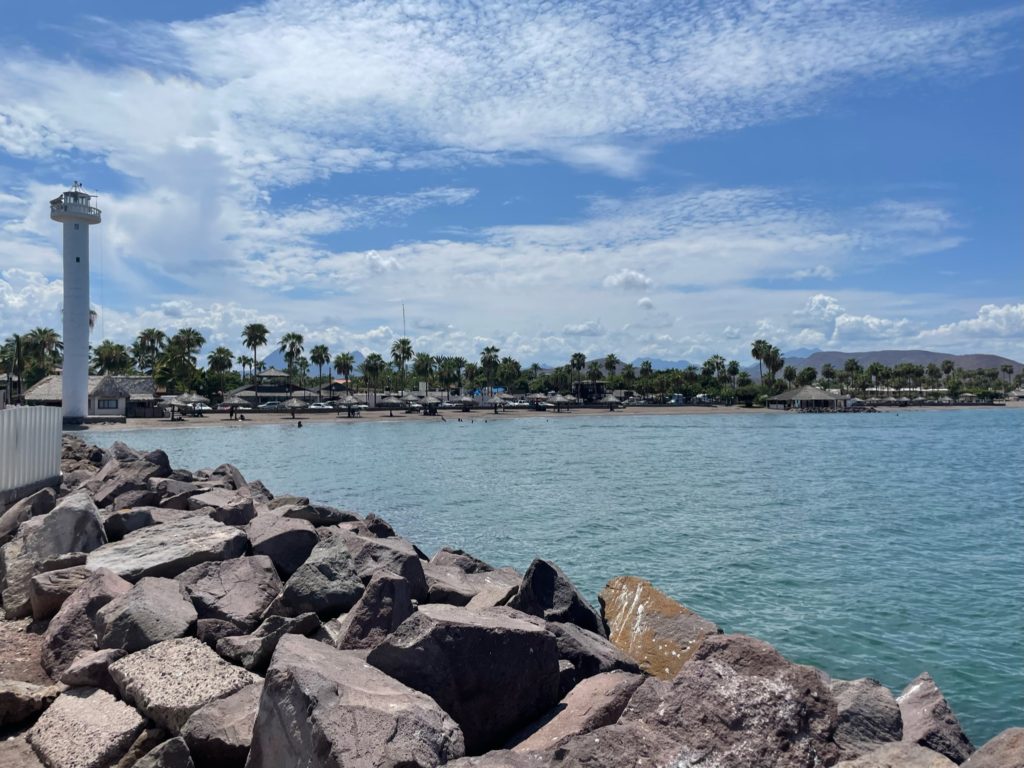
A cruiser can anchor to the south of the harbor and take their dinghy into shore via the harbor, but it is not protected from any direction. Thus most cruisers only go to Loreto when the conditions are calm and they tend to not stay very long.
After 25 minutes of waiting, Sprezzatura Eric texted that he’d landed early and we left for the airport.
Back at the marina, Eric went back to troubleshooting the dive compressor. He took off the final pressure regulator. Air was coming out of the main chamber without the regulator on, so he figured the regulator was the issue. He had the rebuild kit, so he was prepared to tackle the task.
In the evening, we returned to Loreto for dinner. On Monday nights, there are few restaurants open, so our choices were limited. We went to one named Mediteraneo, which was near the lighthouse where the park office was located. There is a lovely view of Isla Carmen from the restaurant.
